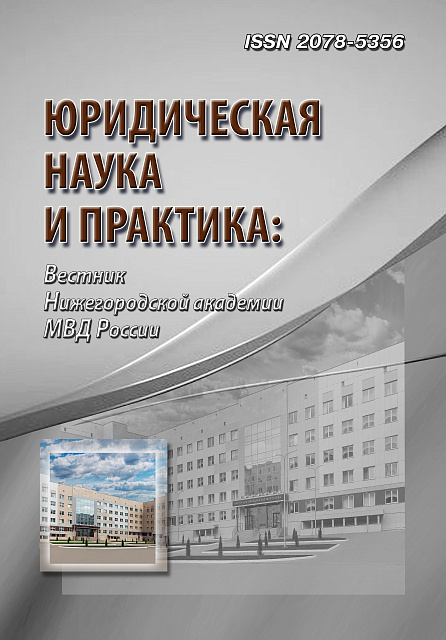The article analyzes the qualified elements of the crime provided for in paragraph “a” of Part 2 of Art. 110 of the Criminal Code of the Russian Federation (hereinafter referred to as the Criminal Code of the Russian Federation), and Part 2 of Art. 109 of the Criminal Code of the Republic of Tajikistan (hereinafter referred to as the Criminal Code of the Republic of Tajikistan), which provides for criminal liability for incitement to suicide or attempted suicide, taking into account the qualifying feature: the presence of financial or other dependence of the victim on the perpetrator. Based on the results of revealing the peculiarities of the relationship between the perpetrator and the victim, on whom the latter is dependent, an analysis of possible forms and methods of committing the crime under study was carried out. An attempt has been made to describe the concept of material and other types of dependence on the guilty party, in which a suicide may find themselves. The behavior of the victim and his possible role in the mechanism of committing the crime under analysis are characterized, which can be of high importance in the investigation of incitement to suicide in the presence of financial or other dependence on the perpetrator as a qualifying feature. Additional risk factors for driving to suicide or attempted suicide due to financial or other dependence on the perpetrator have been identified.
incitement to suicide, suicide, financial dependence, work dependence, dependence in the family, domestic violence, inducement, assistance, involvement
1. Suicide statistics in Russia in 2022: quantitative analysis and important facts. URL: https://deti-skazki.ru/novosti/ (accessed 11.12.2023). (In Russ.)
2. The Ombudsman of Lviv-Belova proposed to create a service to combat teenage suicide. URL: https://www.forbes.ru/forbeslife/493741-ombudsmen-l-vova-belova-predlozila-sozdat-sluzbu-dla-bor-by-s-podrostkovym-suicidom (accessed 11.12.2023). (In Russ.)
3. Statistical data on the number of suicides committed in the Republic of Tatarstan (2015–2023). The document was not published. (In Russ.)
4. Criminal Code of the Russian Federation of June 13, 1996 no. 63-FZ (as amended on August 4, 2023) (as amended and supplemented, entered into force on October 12, 2023). Collection of Legislative acts of the RF, June 17, 1996, no 25, art. 2954. (In Russ.)
5. The Criminal Code of the Republic of Tajikistan of May 21, 1998 no. 9 (as amended no. 1896 of Jule 19, 2022). Akhbori Majlisi Oli of the Republic of Tajikistan, 1998, no. 9, art. 68, art. 69, no. 22, art. 306. (In Russ.)
6. Reshetnikova D. V. Features of the moment of the end of crimes against life and health according to the Criminal Code of the Russian Federation. Society and law, 2011, no. 1 (33), pp. 108–111. (In Russ.)
7. Ukolova Yu. A. Problems of qualifying incitement to suicide as a criminal act. Dissertation... candidate of legal sciences. Moscow, 2008. 219 p. (In Russ.)
8. Bulikeeva D. Zh. Problems of applying the qualifying feature “Another person who is known to the guilty person to be in a helpless state”. Bulletin of ChelSU, 2013, no. 17 (308), pp. 54–57. (In Russ.)
9. Koryagina A. N. The relationship between the victim and the criminal: criminal legal significance. Current problems of Russian law, 2010, no. 2, pp. 207–216. (In Russ.)
10. The Constitution of the Russian Federation (adopted by popular vote of December 12, 1993, with amendments approved during the all-Russian vote of July 1, 2020). The official text of the Constitution of the Russian Federation, as amended, of March 14, 2020, was published on the Official Internet Portal of Legal Information. URL: http://www.pravo.gov.ru (accessed 11.12.2023). (In Russ.)
11. The Constitution of the Republic of Tajikistan of November 6, 1994 (with amendments and additions as of May 22, 2016). URL: https://mfa.tj/ru/main/tadzhikistan/konstitutsiya (accessed 11.12.2023). (In Russ.)
12. Mortality from external causes in Russia since the middle of the 20th century / A. G. Vishnevsky, S. Vasin, E. Kvasha [and other]; under scientific. ed. by A. G. Vishnevsky. Moscow. House of the Higher School of Economics Publ., 2017. 447 p. (In Russ.)
13. Nigmatullin M. R. Domestic violence as a cause of incitement to suicide. Victimology, 2020, no. 2 (24), pp. 19–26. (In Russ.)
14. Women who suffer domestic abuse three times as likely to attempt suicide URL: https://www.theguardian.com/society/2023/feb/22/women-who-suffer-domestic-abuse-three-times-as-likely-to-attempt-suicide (accessed 11.12.2023).
15. Kavak F., Aktürk Üm., Özdemir A., Gültekin A. The relationship between domestic violence against women and suicide risk. Archives of Psychiatric Nursing. 2018. Vol. 32. Issue 4 (August). Pp. 574–579.
16. Jakubczyka A., Klimkiewicza A., Krasowskaa A., Koperaa M., Sławińska-Cerana A., Browerb K. J., Wojnar. M. History of sexual abuse and suicide attempts in alcoholdependent patients. Child Abuse & Neglect. 2014. Vol. 38. Issue 9 (September). Pp. 1560–1568.
17. Antipova A. V. Criminological and criminal legal measures to prevent minors from driving themselves to suicide. Dissertation... candidate of legal sciences. Moscow, 2020. 210 p. (In Russ.)












